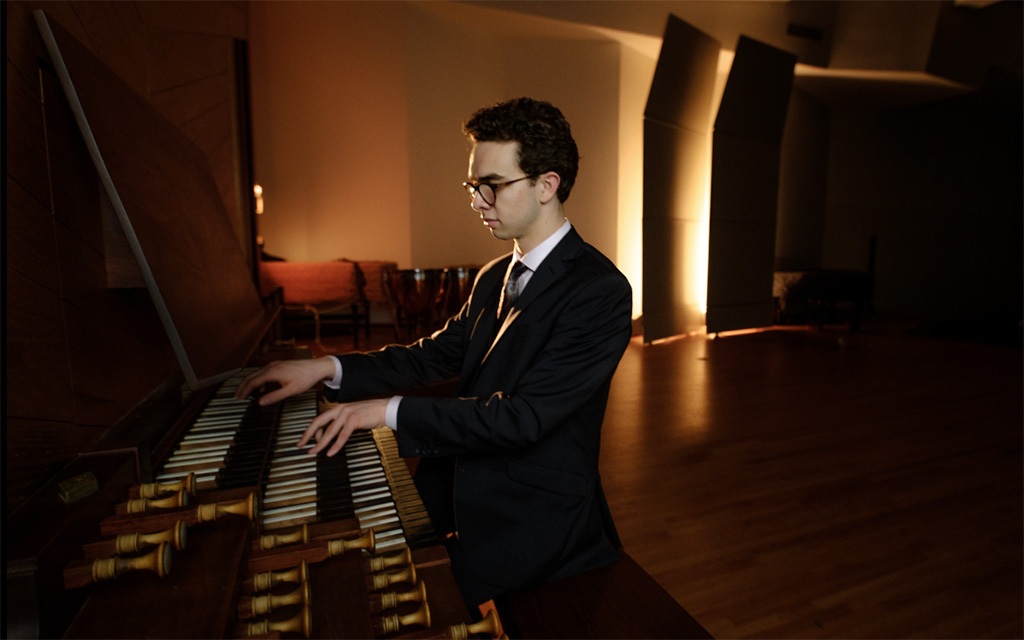The Power of One
By Lindsay Wiley, Winston-Salem Symphony Academy
As I'm on my way to attend another beginning violin class for the Winston-Salem Symphony Academy, I find myself reviewing a set of expectations about the students for that day's lesson that I had developed based on my experience with that class up to this point.
I anticipate there will be too much excitement or an inability to focus in some students, most likely there will be students running around the classroom instead of sitting in their assigned seats, and I will leave the class feeling like much of the effort the other teaching artists and I put forth has not accomplished anything. I also think that if I'm lucky, maybe one student will pay attention that day and remain focused on learning how to play the violin.
Today, however, is a different day. Up to this point, the children have been using their “paper” violins, which are constructed of cardboard and various household items designed to simulate a real violin and bow in order for students to learn the basic concepts of violin playing. To receive a real violin each child must first demonstrate that they are responsible enough to care for their paper violin properly, willing to follow directions, and know basic rhythms and note names. It is the first day after their first public performance on the paper violins and one student is being awarded her very own real violin to take home and practice. This student typically remained focused in class, always cared properly for her paper violin, and knew her rhythms and note names pretty well.
At first, my only thought regarding the decision to award a real violin to one out of seven students in class was that she would be our only success story and we as teachers had failed in our attempt to reach the other students. This proved to be an incorrect assessment of the situation because the atmosphere of the class slowly began to change. The student who had been awarded her violin was a visual example to the other students of the rewards of following the rules and applying oneself. A few lessons later there was another student who became extremely focused on paying attention in class, staying in her seat, caring for her paper violin, and learning her notes and rhythms. Though there were still some behavior issues occasionally for each child, some more than others, the students all really wanted to have a real violin, and one by one they started to focus in class a little bit more. Eventually we brought one real violin for the students to take turns playing in class, which further encouraged the students to work toward their own violin. By the time of the next performance, each of the other six students had earned a real violin to use during class-time that they must continue to work towards being able to take home.
On the day the students each got their own violin to play in class they were all very excited and proud of their accomplishments, but there were two students who stood out to me that day for different reasons. The first student is the one who had earned her violin after the last performance. She wanted to help the other students with their new violins, offering to show them how to use their bows properly, the correct way to play certain rhythms, and how to sit or stand properly with the real violin. She had transformed from a student who was merely learning, following the rules, and achieving for herself into a student who wanted to help others to also learn, follow the rules, and achieve. The second student is one who up to that point continued to have the most difficulty of all the students focusing in class, following directions, and acting out. On that day, he sat quietly when handed his real instrument, but after looking it up and down and commenting on how beautiful the pattern of the wood on the back of the violin was, he said he was so happy that he was going to cry. He then proceeded to follow the first student’s and teaching artists’ instructions for the day. He had transformed from one of the most challenging students in the class into one who was eager to learn and follow directions, who is making clear progress, and who now understands that positive behavior correlates to positive rewards.
Often you might hear a teacher, mentor, volunteer, or other proponent of social change state something along the lines of “if I’ve inspired, helped, or reached just one person, that makes all the difference,” and if not perhaps you've heard of the concept of “paying it forward.” Well, in this instance, the students have proved both the phrase and concept to be true. The inspiration of the first student who received her violin carried onto the next student, and slowly onto the rest of the class, and everyone, including the student who was the most challenging student to reach, eventually achieved their goals of playing on a real violin. The best part of the whole process is that when I thought I was paying it forward to the children, they were in fact paying it forward to me and helping me to realize that reaching just one student can make all the difference.
April 10, 2017





